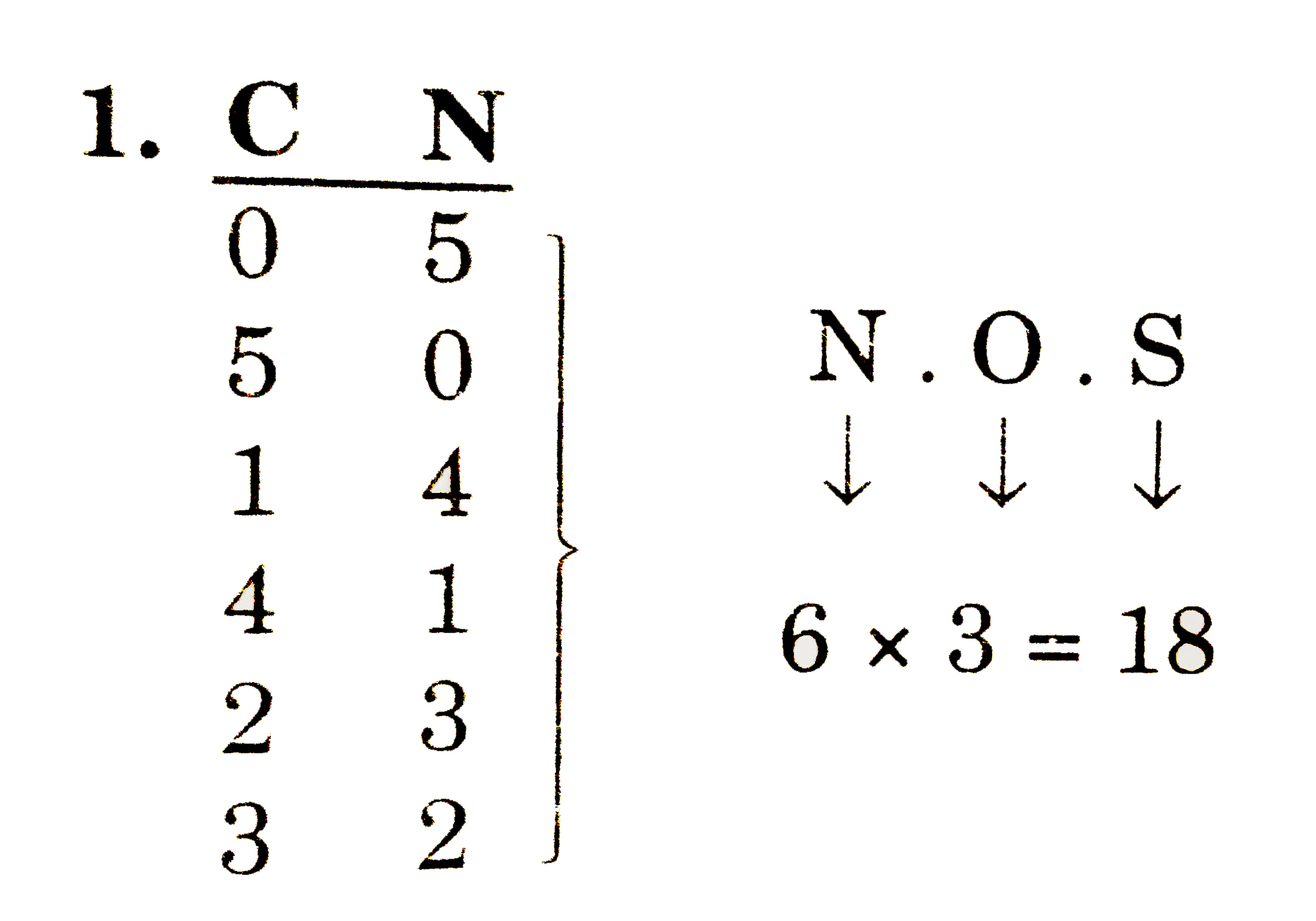Ligands are electron pair donor groups. Ambidentate ligands are those ligands where two different atoms can donate electron pair. The complex where ambidentate ligands are present shows linkage isomerism.
Total number of linkage isomers that are present in Na4[Fe(CN)5NOS] is :
18
6
8
16
The correct Answer is:A
Topper's Solved these Questions
- BOOK - GRB PUBLICATIONCHAPTER - COORDINATION COMPOUNDSEXERCISE - COMPREHENSION 92videos
COORDINATION COMPOUNDS
- BOOK - GRB PUBLICATIONCHAPTER - COORDINATION COMPOUNDSEXERCISE - COMPREHENSION 103videos
COORDINATION COMPOUNDS
- BOOK - GRB PUBLICATIONCHAPTER - COORDINATION COMPOUNDSEXERCISE - COMPREHENSION 72videos
COORDINATION COMPOUNDS
- BOOK - GRB PUBLICATIONCHAPTER - CHEMICAL KINETICSEXERCISE - Subjective Type63videos
CHEMICAL KINETICS
- BOOK - GRB PUBLICATIONCHAPTER - D-BLOCK ELEMENTSEXERCISE - Subjective Type18videos
D-BLOCK ELEMENTS
Similar Questions
Ambidentate ligands can show linkage isomerism .
View SolutionThe question consist of two statements each, printed as Assertion and Reason. While answering these questions you are required to choose any one of the following four responses:
Assertion: Ambidentate ligands lead to linkage isomerism.
Reason: The ionization sphere is different in different linkage isomers.View Solution
Knowledge Check
- Question 1 - Select One
Ligands are electron pair donor groups. Ambidentate ligands are those ligands where two different atoms can donate electron pair. The complex where ambidentate ligands are present shows linkage isomerism.
Total possible linkage isomers of K4[Fe(CN)5(NO2)] is :A12B10C6D4 - Question 2 - Select One
Ligands are electron pair donor groups. Ambidentate ligands are those ligands where two different atoms can donate electron pair. The complex where ambidentate ligands are present shows linkage isomerism.
The correct name of linkage isomer of [Co(NH3)5(SCN)]SO4APentaamminethiocyanato-S-cobalt (III) sulphateBPentaamminethiocyanato-N-Cobalt (II) sulphateCPentaamminethiocyanato-N-Cobalt (III) sulphateDPentaamminecyanato-N-Cobalt (III) sulphate - Question 3 - Select One
Ligands are electron pair donor groups. Ambidentate ligands are those ligands where two different atoms can donate electron pair. The complex where ambidentate ligands are present shows linkage isomerism.
The correct name of linkage isomer of [Co(NH3)5(SCN)]SO4APentaamminethiocyanato-S-cobalt (III) sulphateBPentaamminethiocyanato-N-Cobalt (II) sulphateCPentaamminethiocyanato-N-Cobalt (III) sulphateDPentaamminecyanato-N-Cobalt (III) sulphate
Total number of lone pair of electron and P–O–P linkage present in dimer of P2O5 are :-
View SolutionA: dien is bidentate ligand.
R:dien donates two pairs of electronView SolutionIf a complex, Ma4b2 (where M is a central atom and a and b are mondentate ligands ) has trigonal prismatic geometry, the total number of possible geometrical isomers would be :
View SolutionIf a complex, Ma4b2 (where M is a central atom and a and b are mondentate ligands ) has trigonal prismatic geometry, the total number of possible geometrical isomers would be :
View SolutionA metal ion continues to accept electron pairs from the ligands till the total number of electrons present around the metal ion in the complex becomes becomes equal to the atomic number of
View Solution


